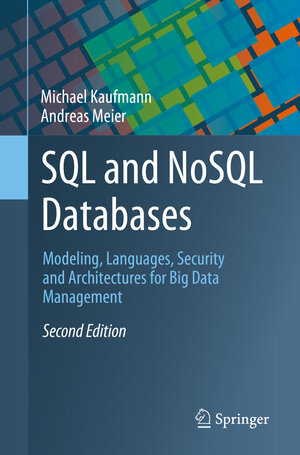
SQL and NoSQL Databases
Modeling, Languages, Security and Architectures for Big Data Management
von Michael Kaufmann und Andreas MeierThis textbook offers a comprehensive introduction to relational (SQL) and non-relational (NoSQL) databases. The authors thoroughly review the current state of database tools and techniques and examine upcoming innovations.
In the first five chapters, the authors analyze in detail the management, modeling, languages, security, and architecture of relational databases, graph databases, and document databases. Moreover, an overview of other SQL- and NoSQL-based database approaches is provided. In addition to classic concepts such as the entity and relationship model and its mapping in SQL database schemas, query languages or transaction management, other aspects for NoSQL databases such as non-relational data models, document and graph query languages (MQL, Cypher), the Map/Reduce procedure, distribution options (sharding, replication) or the CAP theorem (Consistency, Availability, Partition Tolerance) are explained.
This 2nd English edition offers a new in-depth introduction to document databases with a method for modeling document structures, an overview of the document-oriented MongoDB query language MQL as well as security and architecture aspects. The topic of database security is newly introduced as a separate chapter and analyzed in detail with regard to data protection, integrity, and transactions. Texts on data management, database programming, and data warehousing and data lakes have been updated. In addition, the book now explains the concepts of JSON, JSON schema, BSON, index-free neighborhood, cloud databases, search engines and time series databases.
The book includes more than 100 tables, examples and illustrations, and each chapter offers a list of resources for further reading. It conveys an in-depth comparison of relational and non-relational approaches and shows how to undertake development for big data applications. This way, it benefits students and practitioners working across the broad field of data science and applied information technology.



